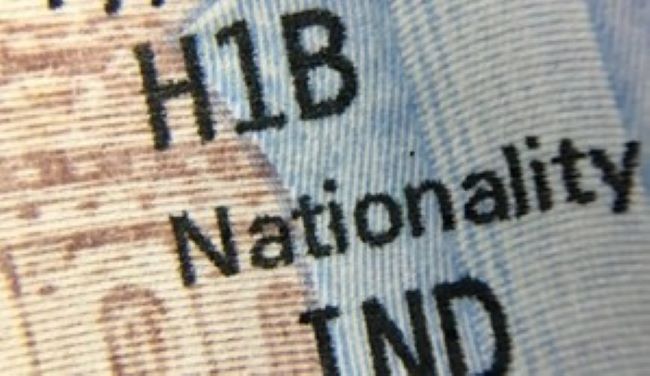NRI PULSE STAFF REPORT
April 25, 2024: Critics of the H‑1B visa program have long decried it as a form of modern-day indentured servitude, but recent data challenges this characterization. A recent analysis by David J. Bier, Director of Immigration Studies at the Cato Institute, a Washington DC-based think tank, reveals a significant trend: H‑1B workers are not only well-paid but are increasingly mobile in the job market, challenging the notion of them being tied to a single employer.
According to Bier, H‑1B workers are changing jobs at a staggering rate. From fiscal year 2005 to 2023, over 1 million H‑1B workers switched employers, marking a more than fivefold increase. The record-setting trend peaked in 2022 with 130,576 job changes, although 2023 saw a slight dip to 117,153.
Furthermore, job shifting among H‑1B workers outstrips new entrants into the program. In 2023, approximately 61 percent of all H‑1B workers hired by new employers were already in the United States under H‑1B status, indicating a robust internal job market among these skilled workers.
Several factors contribute to this surge in job mobility. A tight labor market has naturally led to more job switching across industries. Additionally, the H‑1B program’s annual cap, consistently met since 2014, incentivizes employers to hire existing H‑1B workers rather than recruit new ones. Government initiatives, such as a sixty-day grace period introduced in 2017, have also eased the process of job transition for H‑1B workers.
Another significant driver is the pursuit of green cards. H‑1B workers who have filed for permanent residency can change jobs after 180 days without restarting the green card process, facilitating smoother transitions between employers.
However, obstacles remain. H‑1B workers face hefty fees when switching employers, and the backlog for green cards, particularly affecting Indian workers, can create a sense of obligation to stay with their current employer until the process is complete, the study says.
“The Pew Research Center reports that 2.1 percent of college graduates changed jobs per month in 2022,” Bier claims. “The population of H‑1B workers is estimated to be about 580,000.[1] The data aren’t directly comparable, but with just over 117,000 H‑1B transfers in 2023, this implies a monthly job change rate of 1.7 percent—lower, but nothing remotely like the hyperbolic claims of “indentured servitude.”
Moving forward, advocates suggest reforms to level the playing field for H‑1B workers, such as automatic green card conversion and extended grace periods for job transitions. Such measures, they argue, would not only empower H‑1B workers but also ensure the continued contributions of skilled immigrants to key sectors like science, technology, engineering, math, and medicine.
Former Indian-American GOP presidential candidate Vivek Ramaswamy, on his campaign trail, had called
the H-1B visa system “indentured servitude”, and had pledged to get rid of it if voted to power.
“The lottery system needs to be replaced by actual meritocratic admission. It’s a form of indentured servitude that only accrues to the benefit of the company that sponsored an H-1B immigrant. I’ll gut it,” the Politico quoted the 38-year-old entrepreneur as saying.





